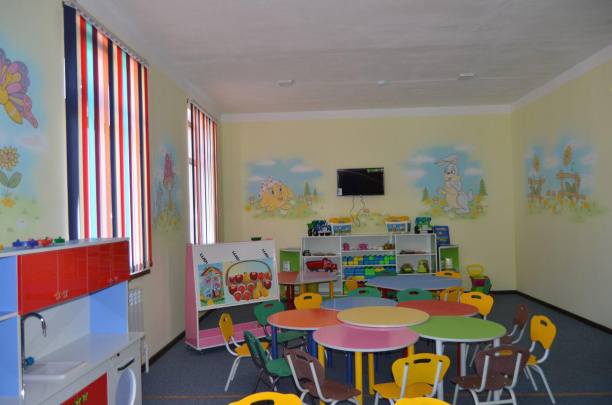
During the interview, he noted that Ohio's farmlands have shrunk by over 355,000 acres since the turn of the century. Yet, Ohio’s farmers stand steadfast, pivoting towards cutting-edge agricultural technologies and resilient crop varieties to combat the encroaching urban sprawl and environmental adversities. Higgins underscored the farmers' ongoing endeavors to evolve their practices, safeguarding the very earth and water that feed both the people and the economy.
How has Ohio's agricultural landscape adapted to the evolving economic and environmental challenges in recent years?
- Ohio is very unique in the fact that we have several major and mid-major metropolitan areas, including Columbus (the state’s capital), Cleveland, Cincinnati, Toledo, Youngstown, Akron and Dayton. This has made economic development, and the urban sprawl that comes with it, a real challenge as each area continues to grow and blur the line between urban and rural. In fact, Ohio has lost 355,085 acres of agricultural land between 2001 and 2021.
Despite the loss of farmland, farmers have adapted with better technology like high yielding corn and soybean hybrids and varieties that have been developed to resist pests and drought. At the same time, they are constantly improving how they farm to better protect their soils and the water.
With Ohio dedicating half of its land to agriculture, how is the state ensuring sustainable farming practices are implemented while pursuing growth in the industry?
- Agriculture is Ohio’s number 1 industry, accounting for one in every 8 jobs and over $12 billion to the state’s bottom line, so state leaders understand the importance of farming and food production for Ohio. In fact, thousands of acres are enrolled in farmland preservation programs each year to ensure that land used for agriculture remains in agriculture for generations to come.
Considering the importance of agriculture in Ohio, what are the key political policy needs of Ohio's farmers, and how does the Ohio Farm Bureau facilitate meeting these needs?
- We are currently engaging with the U.S. Congress and the Ohio General Assembly to maintain a tax landscape that encourages a strong farm economy. We are also promoting enactment of legislation that helps farmers meet their labor needs.
Our members fully support initiatives and implementation efforts that bring proper infrastructure, affordable broadband and high-speed internet access to unserved and underserved parts of the state.
On the economic development front, we are encouraging lawmakers to create smart growth policies that simultaneously allow for economic development opportunities to promote efficient land use while preserving farmland and Ohio Farm Bureau is also leading efforts for additional landowner protections, including eminent domain reform, streamlined judicial procedures and agricultural easement program enforcement.
Can you discuss any recent successes or advancements within Ohio's agricultural community that have had a significant impact on the industry?
- The state’s governor, Mike DeWine, has created the H2Ohio program for water quality. This offers funding for farmers who voluntarily find more and better water quality practices on their farms.
So far, almost 2 million acres are enrolled in the program by over 2,000 farmers, keeping agriculture sustainable for the farmers and their neighbors who need clean water.

How does the Ohio Farm Bureau align its advocacy efforts to resonate with both local and national agricultural policies?
- Many policies listed above, including tax reform, labor, broadband and infrastructure are important at both the state and federal levels, so when we talk with policy makers in Washington, D.C., many of the points we make work just as well in Columbus, Ohio. It shows how intertwined agriculture is all across the country in the issues that we face at the farm level.
Could you share insights into how Ohio's agriculture sector has been affected by international trade agreements, and what role does the Farm Bureau play in representing farmers' interests?
- Trade is a very important aspect of farmer profitability and, for the first time in a long time, the U.S. realized a trade deficit in 2023. That is a major concern for Ohio Farm Bureau members as foreign demand for U.S. farm goods plays a huge role in farm income, which is already facing steep declines. The farm bill plays an important role in trade, so we are currently advocating for a new farm bill as soon as possible to replace the one that was created in 2018 and expired last year.
The state’s largest market is Canada. Ohio exported $21.2 billion in goods to Canada in 2018, representing 39 percent of the state’s total goods exports. Canada was followed by Mexico ($6.9 billion), China ($3.6 billion), United Kingdom ($2.2 billion), and Japan ($1.7 billion).
Trade deals are a big deal for Ohio agriculture, so continuing trade with our major partners and finding new markets is crucial for our members’ success.
What initiatives are in place to support the next generation of farmers in Ohio, and how do these initiatives contribute to the long-term sustainability of agriculture within the state?
- Years in the making, and thanks in large part to the ongoing efforts of Ohio Farm Bureau, the Beginning Farmer Tax Credit is now available to those who’ve recently entered the field, as well as those who help beginning farmers.
The idea for this program all started because younger Ohio Farm Bureau members, who were working their way into agriculture and more experienced members looking to step away from the industry were facing many obstacles when it came to working on a transition plan. Through their recommendations, our organization worked through the policy development process to successfully add incentives for new and beginning farmers to the list of important issues Farm Bureau advocates for every day. Those grassroots efforts have now come to fruition with the passage of this legislation.
With the upcoming U.S. presidential elections, how do you foresee the outcomes impacting agriculture in Ohio, the community life in Marion, and the daily operations of farmers, especially in terms of policy changes and federal support?
In Ohio Farm Bureau’s 105-year existence, the organization has worked with Presidents from both sides of the political aisle with success. No matter who will be taking office for the next four years, agriculture will continue to be an industry challenged by a multitude of factors. It is our job, with the voices of our members, to be sure that whoever leads the U.S. understands the importance of our farmers, their vital role in our food supply system and the policies that have an impact, both positively and negatively, so correct measures are in place for Americans to continue to enjoy the safest, most abundant and affordable food in the world.





